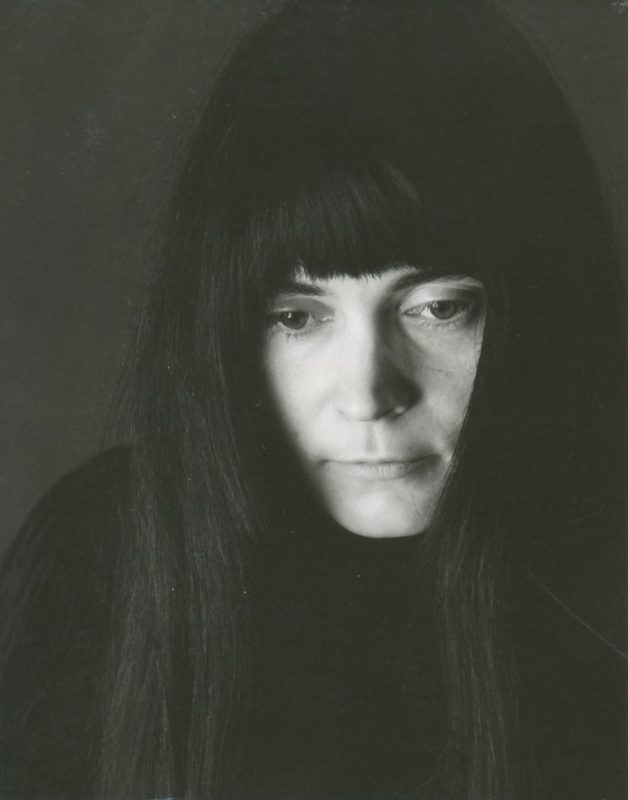Koczÿ’s art, in the last analysis, speaks to us through formal authority and through convincing resolution, leaving us thereby in a state of catharsis, uplifted and hopeful.
— Thomas Messer, Director Emeritus, Solomon R Guggenheim Museum
Artist and Holocaust survivor Rosemarie Inge Koczÿ ((1939-03-05) – (2007-12-12)) created a remarkable oeuvre witnessing childhood experiences as a prisoner in Nazi concentration camps during World War II. A native of Recklinghausen, Germany, Koczÿ was deported from her home and separated from her family in 1942, at age three. She survived two concentration camps, first at Traunstein (Dachau) and then at Ottenhausen (Struthof). Fifty years after the war ended, she wrote:
“We worked in the fields every day. I saw the killings, the shavings, the bleachings, the torture and hunger, the cold, typhus, tuberculosis. Death was all around!”
Left at Ottenhausen for several years following its liberation in 1945, Koczÿ had no memory of her life from ages six to ten, except when she was taken to a hospital by British soldiers, and given a warm bed with clean sheets. Her maternal grandfather finally located her, and she was briefly reunited with her mother and grandparents. Following her grandmother’s death, Rosemarie’s war-traumatized mother was deemed unfit by post-war social workers, and the child was transferred to a Catholic orphanage, where she was trained for domestic service. There, the visually gifted child absorbed the expressive figural images in the Catholic Church, following a likely visit to Recklinghausen’s own Ikonen Museum, famous for its collection of religious icons. In 1959, the 20-year-old Rosemarie departed the orphanage a year early, and, at her grandfather’s urging, she left Germany for Geneva, Switzerland, where she worked long hours as a domestic servant, building her own art portfolio at night. She submitted her portfolio to the Cole des Arts Decoratifs and was accepted in 1961, receiving her diploma with distinction four years later.
Koczÿ’s earliest specialization in tapestry earned broad attention and two solo museum exhibitions in Geneva. She worked tirelessly in the art form, producing over seventy fiber works in fifteen years. A 1972 chance encounter with Peggy Guggenheim in Venice led to their friendship and the commission of a tapestry for the Palazzo Venier dei Leoni, Ms. Guggenheim’s Venetian museum. Peggy Guggenheim championed Koczÿ to Thomas Messer, then the influential director of the Solomon R. Guggenheim Museum in New York. Both encouraged Rosemarie to travel to New York to nurture her art career. Ultimately, Koczÿ became the first female recipient of the Francis Greenburger Award, in 1986.
Koczÿ’s artistic focus on the Holocaust began in the mid-1970s. In recognition of the quality and potential of that work, she received a fellowship in 1980 to the MacDowell Colony in Peterborough, New Hampshire. At MacDowell, she began to create ink drawings memorializing victims of the Shoah, which became an immense series of works numbering over 12,000 by the time of her death. In this work, Koczÿ wrote:
The drawings I make every day are titled I Weave You a Shroud. They are burials I offer to those I saw die in the camps.
Thus inspired, Koczÿ’s creativity was boundless in these series. She completed hundreds of paintings, sculptures, and mixed media works memorializing the lives and losses she witnessed as a concentration camp prisoner.
Koczÿ’s artworks are in collections in the US and abroad, including the Solomon R. Guggenheim Museum, the Illinois Holocaust Museum and Education Center, the Milwaukee Art Museum, the Kupferberg Holocaust Resource Center, the Collection de l’Art Brut in Lausanne, Muses d’Art et d’Histoire in Geneva, Museum of Lagerhaus in St. Gallen, Museum Charlotte Zander in Bnnigheim (Germany), Kunsthalle Recklinghausen, the Gedenksttte Buchenwald, Muse de la Cration Franche in Bgles (France), Museum Dr. Guislain in Ghent (Belgium), Yad Vashem, the Israeli Holocaust Memorial Museum in Jerusalem, and the QCC Art Gallery / CUNY.
She was represented by the Phyllis Kind Gallery in New York during the 1990s; currently, selected work from her estate is represented by Galerie Miyawaki in Kyoto, Japan.
Her memoirs are being published by the QCC Art Gallery / The City University of New York in three volumes.

